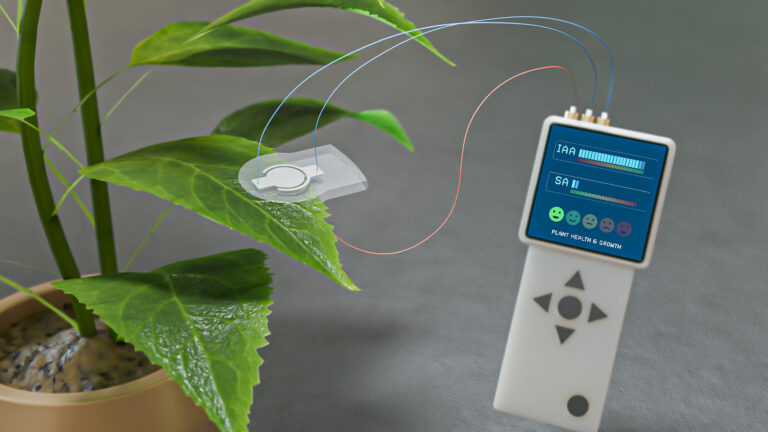Electrical Engineering
Narrow-linewidth lasers bring low-noise answer
Two new designs of narrow-linewidth semiconductor laser offer high-performance light sources for use in sensing and metrology.

Two designs of frequency-locked semiconductor laser have been developed that deliver high-purity light with an ultra-narrow linewidth and exceptionally low noise. The lasers, which operate in the near-infrared or visible regions, look set to prove useful as compact, high-quality coherent optical sources that suit chip-scale integration. They suit applications such as LIDAR, atomic clocks, optical gyroscopes, metrology and microwave photonics.
“We aimed to demonstrate the versatility of low-noise semiconductor lasers by developing devices that operate effectively at two different spectral regions – 1310nm [1] and 780nm [2]. This expands their potential for broader applications in fields that require different wavelengths” explained Professor Yating Wan from KAUST, who is the corresponding author for both papers. The research emerged through collaboration between KAUST, Sandia National Labs and the University of California, Santa Barbara in the U.S. The results were recently published in Nature Photonics and Optica.
The first laser, a quantum dot (QD) laser grown directly on silicon, uses an external fiber cavity to stabilize and narrow the emission line and achieves a Lorentzian linewidth of just 16Hz – claimed to be the narrowest ever achieved for an on-chip QD laser. Its emission wavelength of 1310nm and exceptionally narrow linewidth make it well suited for constructing a highly stable microwave synthesizer.
The second laser consists of an AlGaAs distributed feedback (DFB) design, which is connected to a SiN micro-ring resonator in order to achieve self-injection locking. This resulted in a spectral linewidth of 105Hz. Its emission wavelength of 780nm aligns perfectly with optical transition of Rubidium-87, which is used in atomic optical traps and optical clocks.
Both devices are engineered for cost-effective scalable mass production. The QD lasers, grown on CMOS-compatible (001) silicon, could potentially be manufactured in foundries on 300mm-sized silicon wafers. Meanwhile, use of commercially available components in DFB lasers brings it closer to market readiness.
Both devices bring significant improvements over most semiconductor lasers that typically have much broader linewidths in the kilohertz or megahertz range. While similar narrow linewidth performance can be achieved with fiber lasers or solid-state lasers, they are much larger devices and are not amenable to chip-scale integration with optoelectronics and electronics.
“These advances bring the performance of semiconductor lasers on par with fibre and solid-state lasers: they provide a competitive alternative that combines the benefits of reduced size and cost with high performance,” commented by Artem Prokoshin, the first author of the Optica paper.
The team plans to reduce the size of devices by bringing the external locking cavities onto the same platform as the laser. “Our primary objective is to develop fully integrated narrow-linewidth lasers, explained Wan. “Currently, both devices we’ve worked on utilize external cavities – a fibre cavity or a micro-ring resonator, both of which are off-chip. Our next step is to integrate these components on-chip.”
While there is clearly more work in refining the devices, Wan says that they are already considering real applications and the commercial potential for the lasers. In particular, KAUST is collaborating with industry partners to explore the opportunities of using the QD lasers in sensors for use in autonomous equipment in the mining sector.
“The goal of this project is to develop a solid-state LIDAR prototype that integrates 3D point cloud processing possibilities,” she explained. “This prototype is specifically designed for mining operations in complex desert environments.”
Reference
- Dong, B., Wan, Y., Chow, W.W., Shang, C., Prokoshin, A., Alkhazraji, E., Koscica, R., Wang, H. & Bowers, J. Turnkey locking of quantum-dot lasers directly grown on Si. Nature Photonics 18, 669-676 (2024).| article.
- Prokoshin, A., Gehl, M., Madaras, S, Chow, W.W. & Wan, Y., Ultra-narrow-linewidth hybrid-integrated self-injection locked laser at 780nm. Optica 11, 1024-1029 (2024).| article.
You might also like

Bioengineering
Sensing stress to keep plants safe

Computer Science
Sweat-sniffing sensor could make workouts smarter

Electrical Engineering
New tech detects dehydration by touching a screen

Electrical Engineering
A new interface for efficient electronics

Electrical Engineering
Artificial neurons enable neuromorphic computing with light

Electrical Engineering
Octopus suckers inspire sticky medical patch

Electrical Engineering
Powering the future of the Internet of Things

Computer Science




